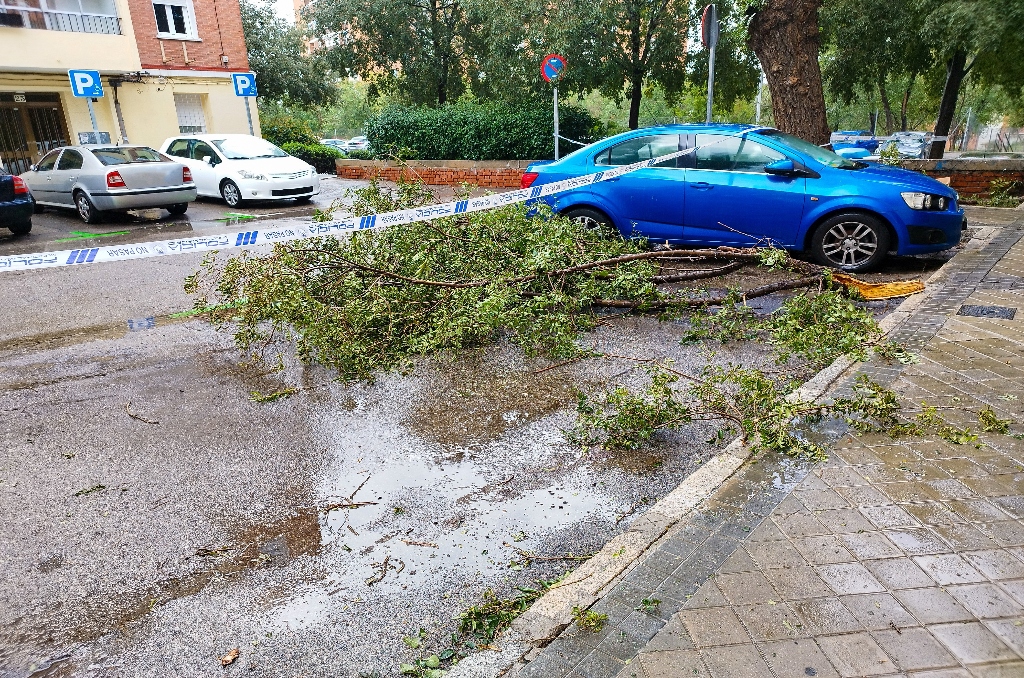Broken branch due to strong wind during Hurricane Helene – Courtesy: Fernando Astasio Avila – Shutterstock
It’s understandable why people are drawn to the Sunshine State given its around 235 days of sunshine per year and lack of a state income tax. But Hurricane Helene’s recent devastation, which has so far claimed over 125 lives in six states and caused an estimated $95 billion to $110 billion in damage and economic loss, serves as a sobering reminder of the state’s susceptibility to natural catastrophes.
This somber incident brings to light the grave dangers posed by Florida’s harsh weather. Beyond the recurring risk of hurricanes, however, newcomers should be ready for additional features of Florida living, such as the requirement for extensive home maintenance, growing property taxes, and possibly extremely expensive insurance premiums in regions vulnerable to hurricane activity.
Prior you loading up your U-Haul, you should be aware of the advantages and disadvantages of living in Florida. This piece delves into nine essential facets of Florida life, providing you with an understanding of what’s in store for you should you choose to make this stunning state your home.
1. June to November is hurricane season.
The six-month hurricane season in Florida runs from June 1 to November 30. Although this time spans half the year, mid-August to late October usually sees the most storm activity. Warmer ocean temperatures during these periods encourage storms that are stronger and occur more frequently.
These five regions of Florida are more vulnerable to hurricane landfalls than others, according to historical data:
Miami-Dade, Broward, and Palm Beach counties comprise Southeast Florida. In Florida’s history, this area has experienced the greatest amount of hurricane landfalls. The region is especially vulnerable since it is exposed to both the Atlantic Ocean and the warm waters of the Gulf Stream.
Florida Keys – Because of their position and low height, hurricanes frequently hit the Florida Keys. Throughout history, a number of significant hurricanes have had an impact on them, including Hurricane Wilma, Hurricane Irma, and the 1935 Labor Day Hurricane.
Southwest Florida—that is, the region around Tampa Bay. This region has experienced major hurricane activity in recent years, including Hurricanes Ian and Idalia in 2023 and this year’s Hurricane Helene, although not being impacted as frequently as Southeast Florida.
Florida Panhandle – There have been other powerful storms that have made landfall in this area, most notably Hurricane Ivan, Hurricane Michael, and Hurricane Helene in the vicinity of Pensacola and Panama City. Because of its proximity to the Gulf of Mexico, it is vulnerable to hurricanes that originate or intensify there.
Florida’s northeast, including Jacksonville – This region has seen numerous major hurricane landfalls, including Hurricane Dora in 1964 and Hurricane Matthew and Hurricane Irma in more recent years, while being less regularly affected than other coastal locations.
In actuality, no area in Florida is completely protected from storms. These storms can have a major impact even inland, bringing with them tornadoes, flooding, and severe rainfall.
2. The real estate market in Florida is dynamic and constantly evolving.
Imagine if everyone in Minneapolis, Minnesota decided to go to Florida overnight. That is precisely what occurred between July 2021 and July 2022, when 444,500 individuals traveled to the Sunshine State and exchanged their snow shovels for sunscreen.
During the COVID-19 pandemic, a lot of people moved to Florida because it offered freedom from tight lockdown regulations. Others, however, were drawn in by the chance to work remotely from a more appealing place. What was the outcome? In an instant, Florida’s real estate market went from being hot to being scorching, which caused property taxes and home prices to soar.
But as they say, things must come to an end. A kind of reverse exodus has occurred over the last few years as a result of a perfect storm that included skyrocketing insurance costs, damaging hurricanes, rising mortgage rates, and economic instability. Currently, a lot of ardent Floridians are selling their houses and moving elsewhere.
In Florida, there are currently close to 200,000 properties for sale, a staggering 35 percent more than there were even a year ago. With numerous sharp price reductions occurring around the state, this increase in inventory signals a change in the market’s characteristics from a seller’s to a buyer’s market.
What is the true cost of a property in Florida?
Even while the median home price right now is about $400,000, that figure isn’t entirely accurate. For example, the typical Miami home is valued at approximately $600,000. However, you may locate properties for less than half of that sum in places like Tampa, Orlando, Jacksonville, Gainesville, Ocala, Port Charlotte, Punta Gorda, Fort Myers, or Cape Coral.
Stories that matter are our priority. At Florida Insider, we make sure that the information we provide our readers is accurate, easy-to-read, and informative. Whether you are interested in business, education, government, history, sports, real estate, nature or travel: we have something for everyone. Follow along for the best stories in the Sunshine State.
Melissa’s career in writing started more than 20 years ago. Today, she lives in South Florida with her husband and two boys.

